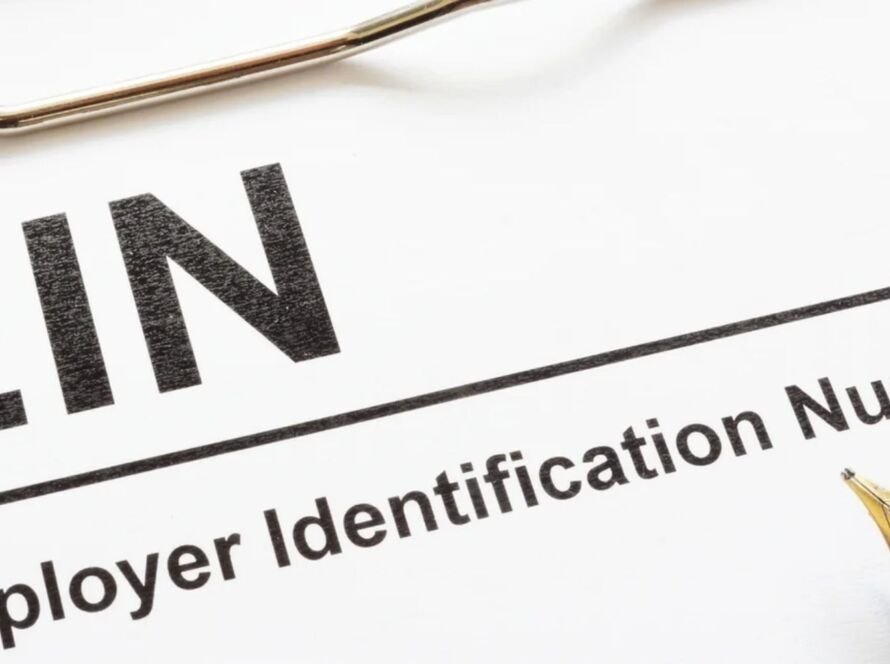Why foreign entrepreneurs are flocking to Texas like never before?
Picture this: you’re standing at the crossroads of American business opportunity, holding a republic of texas map that once represented an independent nation, now transformed into America’s economic powerhouse. Every year, thousands of international entrepreneurs who came to texas for better economic opportunity discover what locals have known for generations – this state offers unmatched business potential across diverse regions.
The Lone Star State isn’t just big in size; it’s massive in opportunity. From the bustling tech corridors of Austin to the energy capitals along the Gulf Coast, understanding Texas business regions becomes your competitive advantage. Whether you’re examining a map of texas to mexico for cross-border trade opportunities or identifying the next emerging economic hub, the right geographical knowledge can make or break your venture.
Ready to unlock Texas’s hidden business potential? This comprehensive guide reveals the essential maps, regions, and strategic locations that successful foreign entrepreneurs use to build thriving enterprises across America’s second-largest state.
The Historical Foundation: from republic to business empire
Understanding the republic of Texas legacy in modern business
The republic of texas map tells a story that modern entrepreneurs must understand. From 1836 to 1845, Texas operated as an independent nation, developing its own trade relationships, economic policies, and business culture. This historical independence created a unique entrepreneurial spirit that persists today.
Modern Texas business regions still reflect this legacy of self-reliance and innovation. The same territories that once housed cattle ranches and cotton plantations now host technology companies, energy corporations, and manufacturing giants. Understanding this evolution helps foreign investors appreciate why Texas maintains its business-friendly policies and competitive tax structure.
The transition from republic to statehood established Texas as a natural bridge between American markets and international trade, particularly evident when studying any map of texas to mexico. This geographical advantage continues attracting entrepreneurs who recognize the strategic value of operating in a state with both historical independence and modern connectivity.
Summary: Texas’s republic heritage created today’s entrepreneur-friendly environment, making it America’s premier destination for international business ventures seeking independence, growth, and strategic market access.

Strategic geographic advantages: border opportunities and trade routes
Maximizing Mexico Border Business Potential
A detailed map of texas to mexico reveals over 1,200 miles of shared border, creating unparalleled opportunities for cross-border commerce. This extensive frontier includes major trade gateways like Laredo, El Paso, Brownsville, and McAllen – each offering distinct advantages for different business models.
The Texas-Mexico economic relationship represents one of North America’s most dynamic trade partnerships. Foreign entrepreneurs leveraging this geographic advantage access both American consumer markets and Mexican manufacturing capabilities. Cities along this border have developed specialized infrastructure supporting international commerce, from customs facilities to bilingual business services.
Understanding border dynamics requires more than examining static maps. Successful international businesses study traffic patterns, seasonal trade fluctuations, and regulatory frameworks that vary by crossing point.
Each major border city offers unique industry clusters – Laredo dominates automotive trade, while El Paso excels in electronics and textiles.
Transform your business strategy today by identifying which border region aligns with your industry focus and operational requirements.
Summary: Texas-Mexico border regions offer specialized trade advantages, with each crossing point providing unique industry expertise and infrastructure supporting diverse international business models across multiple sectors.
Major Texas business regions: economic powerhouses decoded
The Triangle of Innovation: Dallas-Houston-Austin
The golden triangle formed by Dallas, Houston, and Austin represents Texas’s economic core, accounting for the majority of the state’s GDP and business activity. Each city within this triangle serves distinct economic functions while maintaining interconnected business ecosystems.
Dallas functions as the financial and corporate headquarters hub, hosting numerous Fortune 500 companies and serving as the Southwest’s banking center. Houston dominates energy, aerospace, and international trade through its massive port system. Austin leads technology innovation and serves as the state capital, creating unique public-private partnership opportunities.
These Texas business regions benefit from excellent transportation infrastructure, including multiple international airports, interstate highway systems, and freight rail networks. The proximity between these cities – roughly 200 miles apart – enables businesses to access diverse talent pools, supplier networks, and customer bases within a single operational region.
Foreign entrepreneurs often establish their initial Texas presence within this triangle before expanding to secondary markets. The concentration of international businesses creates supportive communities for newcomers, including specialized legal, accounting, and consulting services designed for global companies.
Summary: The Dallas-Houston-Austin triangle provides comprehensive business infrastructure, diverse industry clusters, and international support networks essential for foreign entrepreneurs establishing successful Texas operations.
Gulf Coast economic corridor: energy and manufacturing hub
The Texas Gulf Coast represents one of America’s most concentrated industrial regions, stretching from Beaumont to Corpus Christi. This corridor houses the nation’s largest petrochemical complex, multiple deep-water ports, and extensive manufacturing facilities serving both domestic and international markets.
Energy companies dominate this region, but diversification continues expanding opportunities in aerospace, biotechnology, and advanced manufacturing. The presence of major universities and research institutions creates innovation ecosystems supporting new business development and technological advancement.
Port access provides crucial advantages for businesses requiring international shipping capabilities. Houston’s port ranks among the world’s busiest, while smaller ports like Galveston and Port Arthur offer specialized services for specific industries. This maritime infrastructure connects Texas businesses directly to global supply chains.
Discover untapped opportunities in Texas’s most industrially diverse region, where energy expertise meets manufacturing innovation.
Summary: The Gulf Coast corridor combines energy industry leadership with diversified manufacturing, supported by world-class port infrastructure enabling seamless international trade and supply chain management.
Emerging economic zones: future growth areas
Secondary Markets with Primary Potential
Beyond the major metropolitan areas, Texas business regions include rapidly growing secondary markets offering lower operational costs and emerging opportunities. Cities like San Antonio, Fort Worth, El Paso, and the Rio Grande Valley represent these expanding economic zones.
San Antonio leverages its military presence and healthcare systems to attract cybersecurity, defense contracting, and medical technology companies. Fort Worth, while part of the Dallas metroplex, maintains its own economic identity focused on aviation, defense, and distribution logistics.
El Paso serves as a crucial gateway for NAFTA trade, with specialized expertise in cross-border manufacturing and logistics. The Rio Grande Valley, encompassing cities like McAllen and Brownsville, offers the lowest operational costs in Texas while providing direct access to Mexican markets.
These emerging regions often provide incentive packages specifically designed to attract international investment. Local economic development organizations actively court foreign businesses, offering everything from site selection assistance to workforce training programs.
Summary: Secondary Texas markets provide cost advantages, specialized industry clusters, and targeted international business incentives while maintaining access to statewide economic benefits and infrastructure networks.
Industry-Specific Regional Advantages
Matching Your Business Model to Optimal Locations
Different Texas business regions excel in specific industries, making location selection crucial for operational success. Technology companies gravitate toward Austin’s Silicon Hills, while energy firms prefer Houston’s established networks and infrastructure.
Manufacturing operations often benefit from locations along major transportation corridors, particularly near interstate highways and freight rail lines. The I-35 corridor from Dallas to San Antonio offers excellent connectivity for distribution-focused businesses serving multiple regional markets.
Agricultural and food processing companies find advantages in rural Texas regions with established farming communities and processing facilities. These areas often provide workforce stability and lower land costs while maintaining access to major transportation networks.
Service-based businesses typically perform best in major metropolitan areas where they can access diverse client bases and professional support services. However, specialized services supporting specific industries may thrive in industry-concentrated regions.
Position your business strategically by aligning your operational requirements with regional strengths and industry ecosystems.
Summary: Texas regional specialization enables businesses to optimize operations by matching location selection with industry strengths, workforce availability, infrastructure access, and market proximity requirements.
Transportation and Infrastructure: Connecting Regions for Success
The Interstate Highway System and Business Connectivity
Texas business regions benefit from one of America’s most comprehensive interstate highway systems, with major routes connecting economic centers and facilitating efficient goods movement. I-35 runs north-south through the state’s population center, while I-10 provides east-west connectivity from Louisiana to California.
This highway infrastructure supports just-in-time manufacturing, distribution operations, and service businesses requiring regional mobility. Foreign companies establishing Texas operations gain access to markets throughout the South and Southwest United States through these transportation networks.
Rail infrastructure complements highway systems, with major freight lines connecting Texas ports to inland distribution centers. Cities like Dallas and Houston serve as major rail hubs, providing businesses with multiple shipping options and competitive transportation costs.
Air transportation infrastructure includes multiple international airports, with Dallas-Fort Worth and Houston serving as major global gateways. This connectivity enables businesses to maintain international relationships while serving American markets efficiently.
Summary: Texas transportation infrastructure provides comprehensive connectivity options enabling businesses to efficiently serve regional, national, and international markets through integrated highway, rail, and air systems.
Regulatory Environment and Business Climate Across Regions
Understanding Local Variations in Business-Friendly Policies
While Texas maintains overall business-friendly policies, individual regions often implement additional incentive programs and regulatory frameworks designed to attract specific industries. Understanding these local variations helps foreign entrepreneurs optimize their operational strategies.
Major metropolitan areas typically offer comprehensive business support services, including international trade assistance, workforce development programs, and streamlined permitting processes. These services often include specialized support for foreign-owned businesses navigating American regulatory requirements.
Border regions maintain additional programs supporting international trade and cross-border business operations. These include foreign trade zone designations, customs brokerage services, and bilingual business support systems designed for companies operating in both American and Mexican markets.
Rural regions often provide the most aggressive incentive packages, including tax abatements, infrastructure improvements, and workforce training assistance. These programs help offset the potentially limited access to urban amenities and services.
Maximize your competitive advantages by understanding regional policy differences and available support programs before finalizing location decisions.
Summary: Texas regional business climates vary significantly, with each area offering distinct advantages through specialized incentive programs, support services, and regulatory frameworks designed to attract specific business types and industries.
Taking Action: Your Texas Business Location Strategy
Texas offers foreign entrepreneurs unmatched opportunities across diverse business regions, each providing unique advantages and specialized support systems. From the historical foundation established by the republic of texas map to modern economic corridors connecting international markets, success depends on strategic location selection aligned with your business model and growth objectives.
The map of texas to mexico reveals just one dimension of the state’s strategic advantages. Whether you’re drawn to the innovation triangle of major metropolitan areas, the industrial might of the Gulf Coast, or the emerging opportunities in secondary markets, Texas business regions provide the infrastructure, workforce, and market access necessary for international business success.
Your Texas success story begins with a single decision. Contact Texas economic development professionals today to schedule a site selection tour and discover which region offers the optimal foundation for your American business venture. Don’t let another day pass wondering about possibilities – take the first step toward your Texas business future right now.
Frequently asked questions
What are the main Texas business regions for foreign investors?
The primary regions include the Dallas-Houston-Austin triangle, Gulf Coast industrial corridor, border cities with Mexico, and emerging secondary markets like San Antonio and Fort Worth, each offering distinct industry advantages.
How does the Texas-Mexico border benefit international businesses?
The 1,200-mile border provides multiple trade gateways, specialized cross-border infrastructure, reduced shipping costs, and access to both American consumer markets and Mexican manufacturing capabilities through established trade relationships.
Which Texas region offers the lowest operational costs for new businesses?
The Rio Grande Valley and rural East Texas typically provide the lowest operational costs, while secondary markets like San Antonio offer moderate costs with better infrastructure than rural areas.
What transportation advantages do Texas business regions provide?
Texas offers comprehensive interstate highway systems, major freight rail networks, multiple international airports, and world-class port facilities enabling efficient access to regional, national, and global markets.
How do regional incentive programs differ across Texas?
Major metropolitan areas focus on international trade support and workforce development, border regions emphasize cross-border commerce assistance, while rural areas typically offer the most aggressive tax incentives and infrastructure improvements.
What industries perform best in different Texas regions?
Technology thrives in Austin, energy dominates Houston and the Gulf Coast, finance concentrates in Dallas, manufacturing benefits from border regions, and agriculture succeeds in rural areas with established farming communities.



